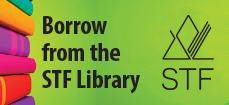Listen and respond as a jazz performer when playing jazz.
| (a) |
Respond to qualities of personal tone such as pitch, dynamics, style, rhythm, and time. |
| (b) |
Respond to the rest of the ensemble (e.g., their tone, pitch, dynamics, style, rhythm, time, balance, and blend). |
| (c) |
Respond to the ensemble's response to the student's responding to them (e.g. when the lead player starts to play out or articulate a certain way, does the band follow and does the lead player recognize it?). |
| (d) |
Respond to the conductor/leader, including his/her gestures, cues, tempo, expressions, and body language. |
| (e) |
Listen to the acoustic properties of the performing space, including the sound, tone, loudness, and reverb of the room, and adjust playing accordingly. |
| (f) |
React to the audience, to their presence (or not), body language, expressions, and their reaction to the music (e.g. applause, cheering, being asked to play quieter). |
| (g) |
Know the history, culture, style, form, and tempo of the music being performed and respond to the music (written or not written) by reading the music and/or performing the notes and/or changes appropriately. |
| (h) |
Recall previous experiences and knowledge (in music and in life) and integrate these into solo and group jazz performances. |
| (i) |
Know any special emotional context that may apply to the music, generate the appropriate emotional feeling or energy, and/or change the personal emotional state of the performer to synchronize it with the emotional context of the music being performed. |
| (j) |
Know,predict, and/or anticipate what is next or might be next in the music and prepare for that while performing in the moment of the music. |


The accompanying CD demonstrates the examples in the book.




